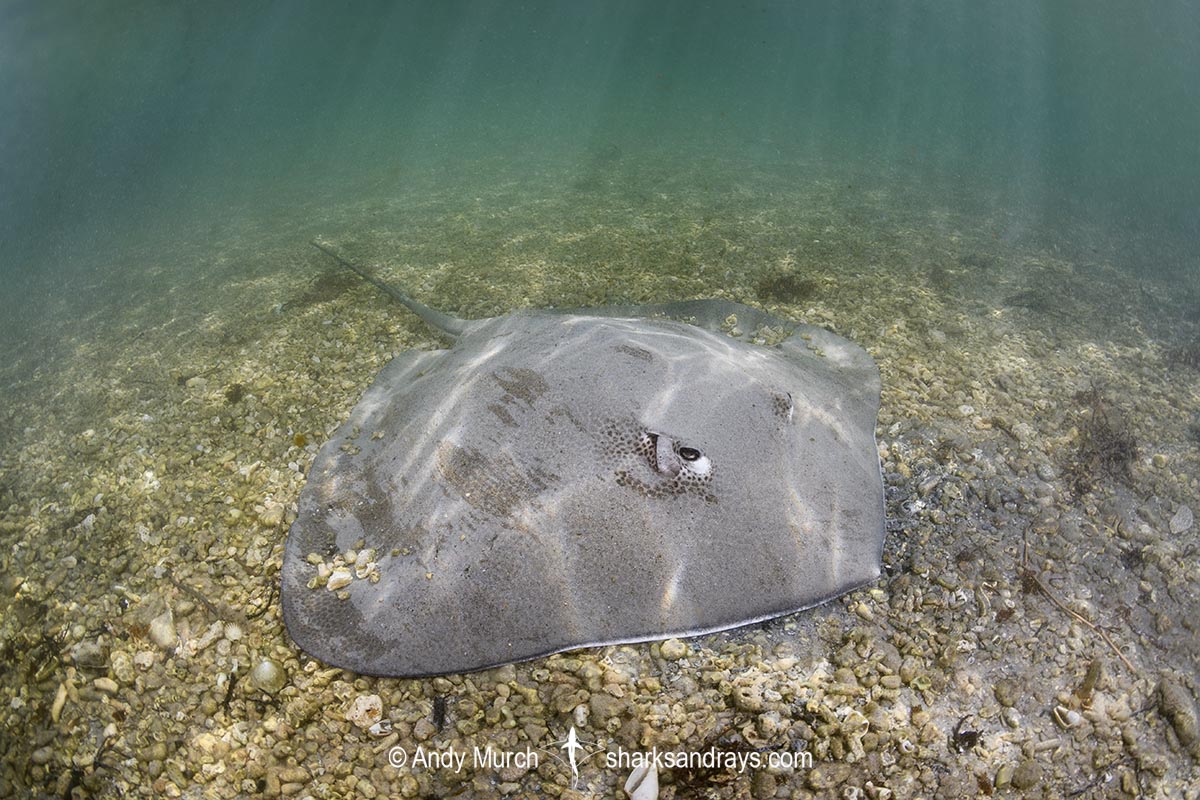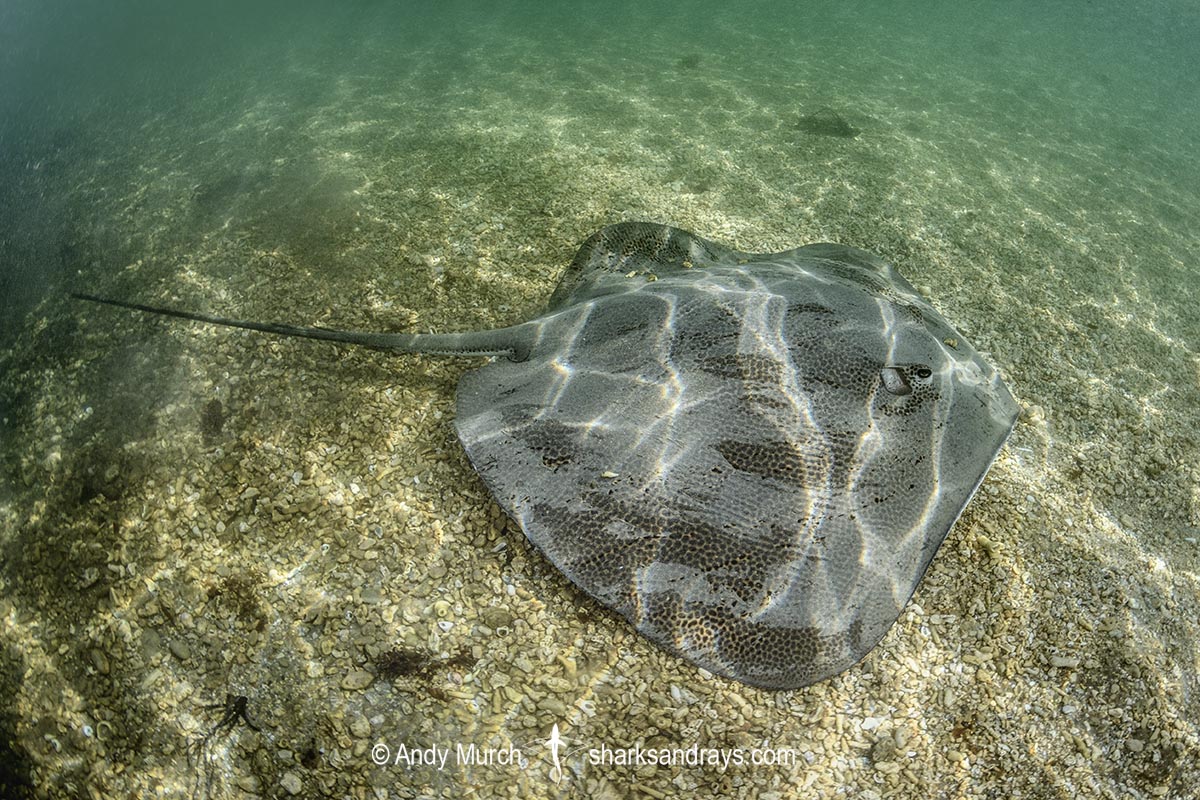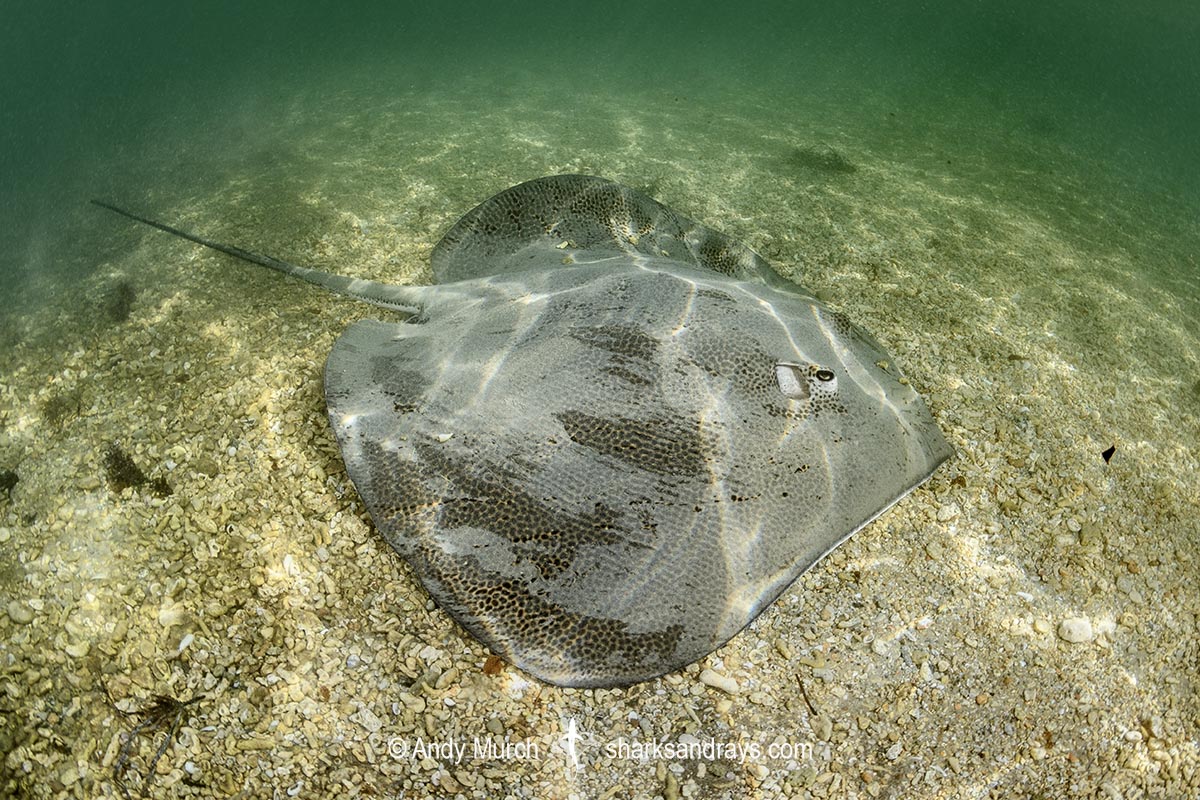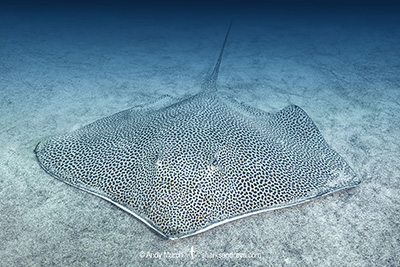Common names
Australian Whipray.
Binomial
Himantura australis.
Synonyms
None.
Identification
A large whipray with a somewhat rounded kite-shaped disc that is slightly wider than long. Disc width 1-1.1 x length. Snout tip obtusely angular without a protruding central lobe. Anterior margins of disc straight. Pectoral fin apexes narrowly to broadly rounded.
Eyes small and protruding. Snout length 1.7-2 x combined eye and spiracle length.
Mouth contains 4 large oral papillae. Central papillae occasionally have small papillae between them. Prominent labial furrows and folds around mouth. Mouth slightly arched. Lower jaw weakly concave at symphysis. Wide, short, skirt-shaped nasal curtain with a finely fringed posterior margin.
Usually 2 small heart-shaped thorns on midline at nape, but no othermidline thorns present. Well developed denticle band (in adults) extends onto tail. Tail narrow-based, tapering evenly to caudal sting, then whiplike or filamentous to tip. Small, sharp thorns on tail beyond caudal sting. Tail length (when intact) 3 x disc width. One caudal sting usually present.
Colour
Dorsum pale tan, or greyish-white with a dense pattern of small dark spots or speckles that sometimes form wavy lines. Spots on juveniles often smaller. Subadults may display a reticulate or honeycomb pattern. Tail base densely spotted anterior to sting; beyond sting black. Ventrum white with a dark/dusky disc margin.
Size
Maximum disc width at least 183cm. Disc width at birth approximately 21-28cm.
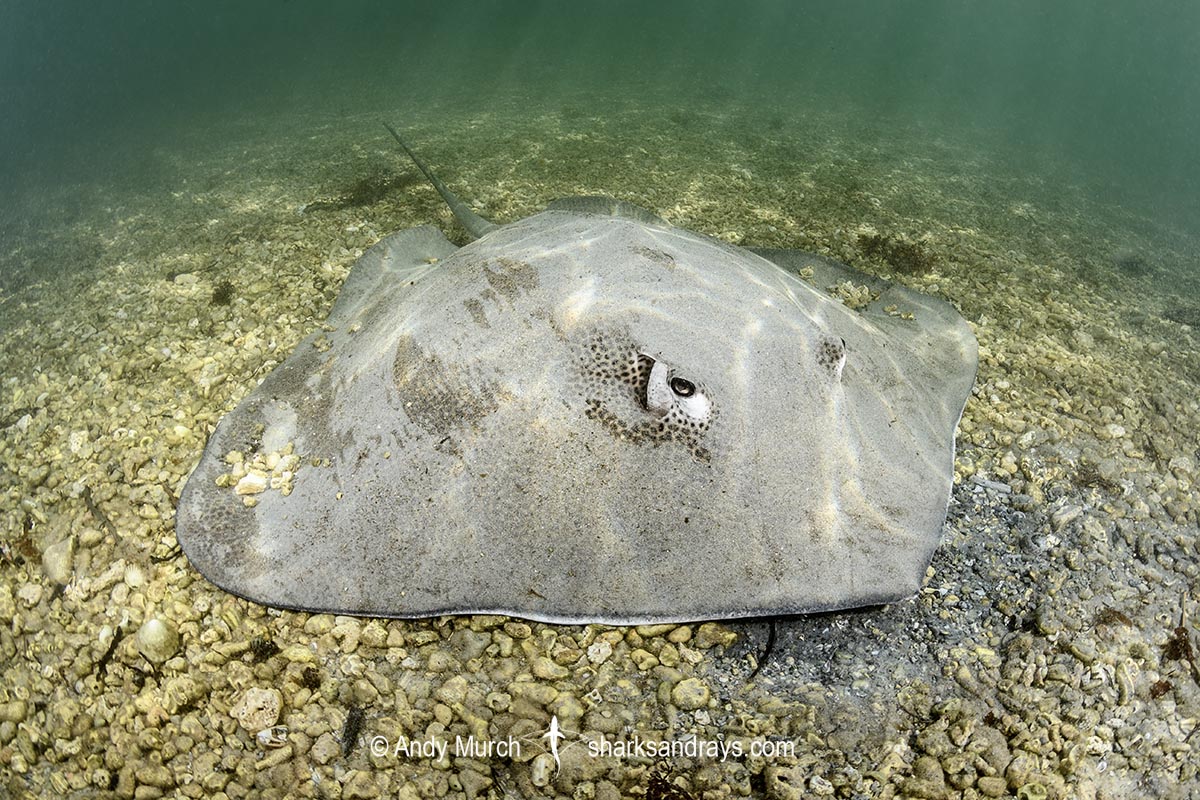
Conservation Status
LEAST CONCERN
The Australian Whipray (Himantura australis) is is a minor discarded bycatch component of trawl fisheries in Australia. Capture rates are low and have probably declined further since the introduction of Turtle Excluder Devices (TEDs) in 2000. In PNG Hymantura australis is a minor bycatch component of the prawn trawl fishery in the Gulf of Papua where mortality rates are likely much higher because no bycatch reduction devices are used. There is also a small scale coastal fishery in PNG, in which this species is retained for its high quality meat.
Although some declines have probably occurred in New Guinea, the Australian Whipray’s range is mostly in Australian waters, where there is no evidence of population decline.
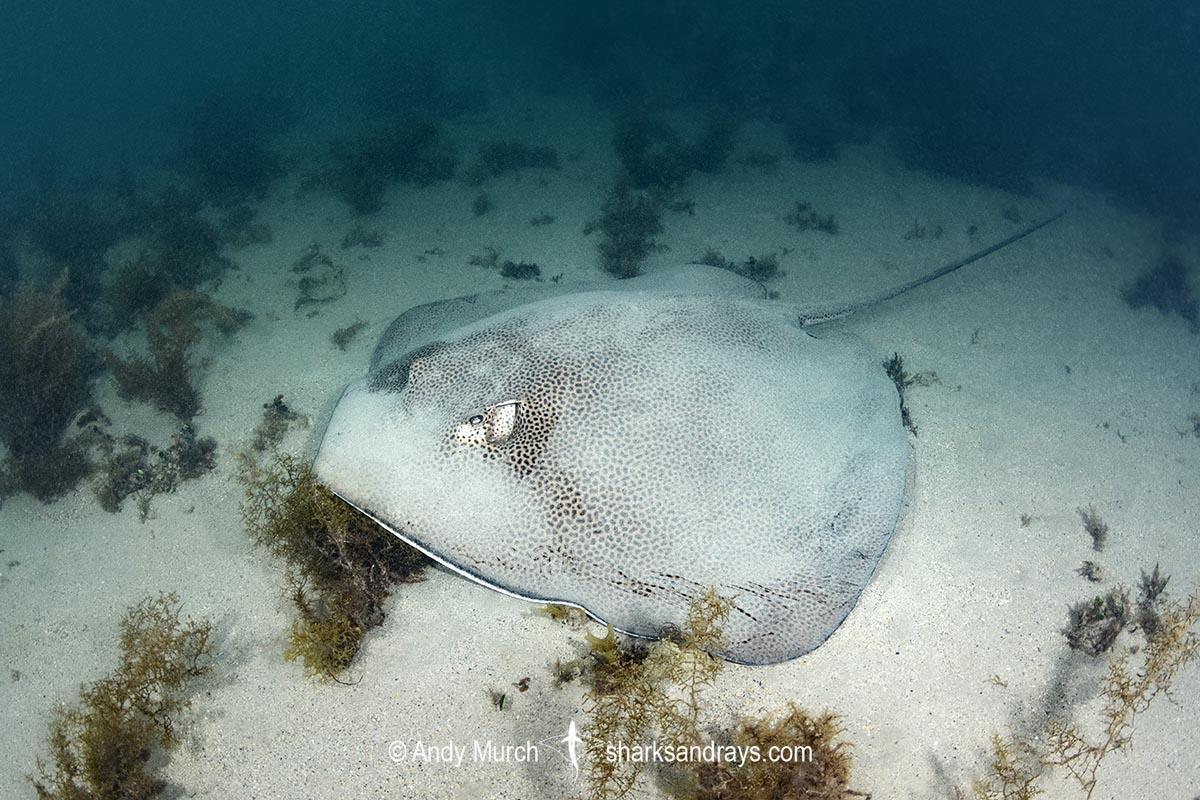
Habitat
Sub-tropical/tropical seas. On soft substrates, sometimes adjacent to reefs. From brackish estuaries to at least 45m.
Distribution
Indian Ocean and central west Pacific. The Australian Whipray is found from Northern Australia (northern WA to southern Queensland) to the south coast of West Papua and PNG.
Reproduction
Matrotrophic aplacental viviparity. Up to 4 pups per litter.
Diet
Probably invertebrates and small benthic fishes.
Behavior
Sedentary. Spends much of the day resting on the substrate. Moves inshore to feed with the rising tide.
Reaction to divers
Shy but approachable with non-aggressive movements. Generally bolts if approached closely.
Diving logistics
Australian whiprays are common at popular dive and snorkeling sites in northern WA and in Queensland. In Western Australia, they are fairly common at shallow beaches in the Exmouth Gulf e.g. at Bundegi Mangrove.
In Queensland, Australian whiprays are commonly seen at Manta Bommie near North Stradbroke Island, and at numerous other sites along the coast.
What’s new
View our full list of updates
Similar species
Coach/Reticulate Whipray A very similar looking ray that is common across much of the Indian Ocean.

